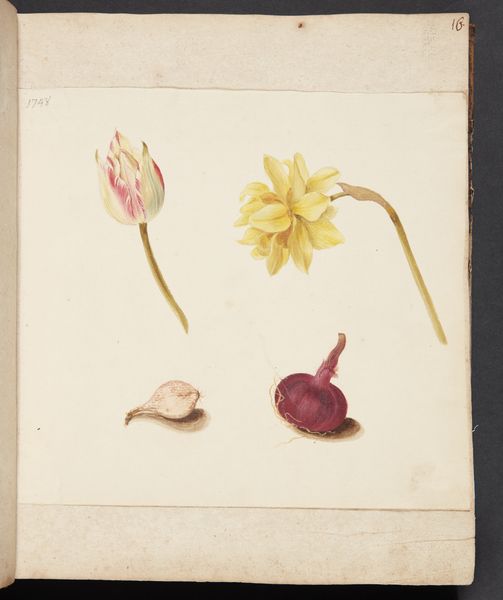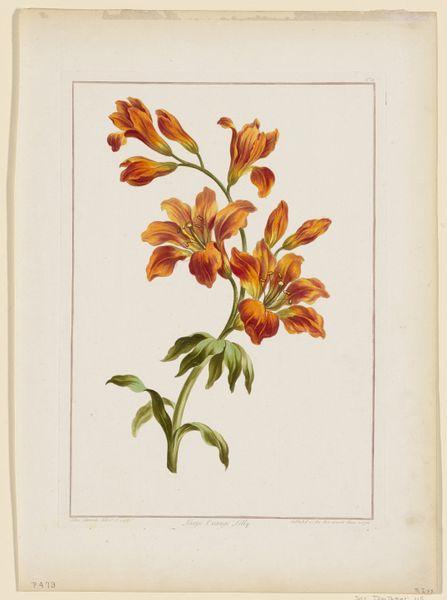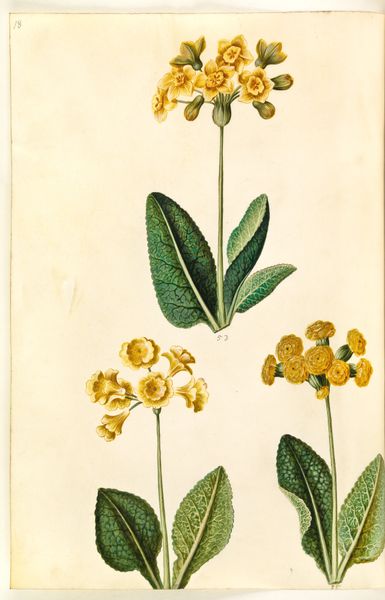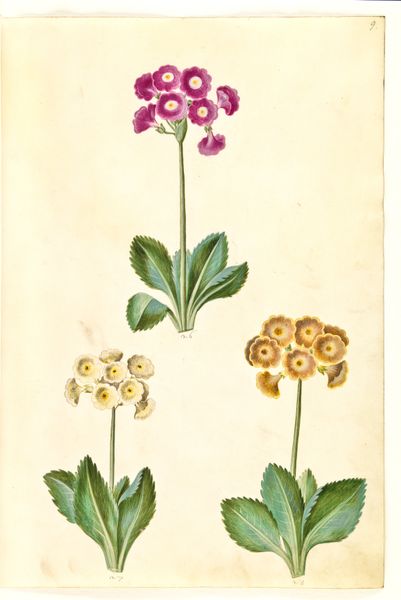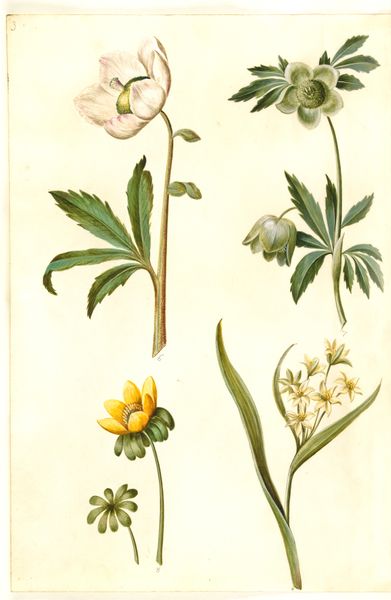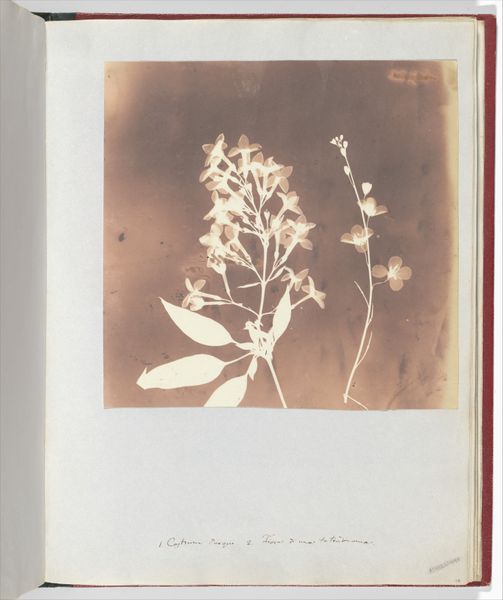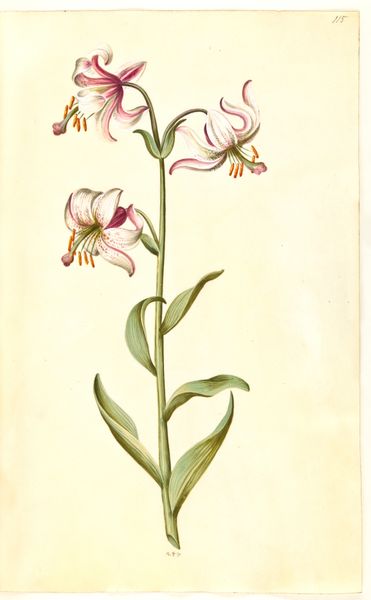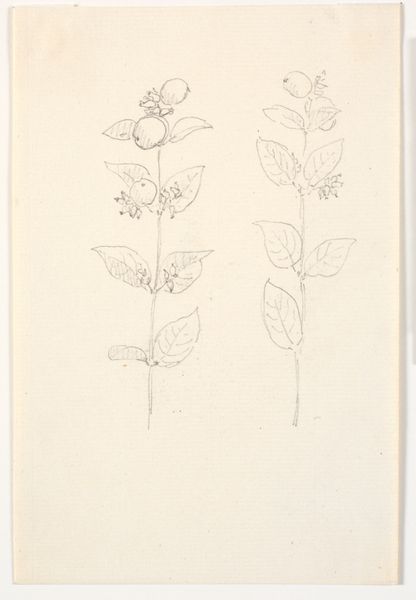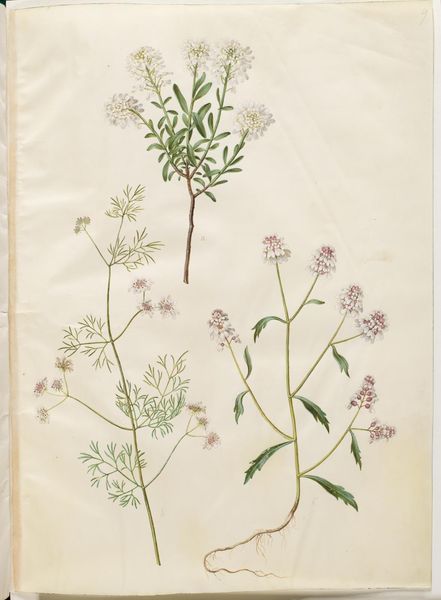
Botanical Dissection- Yellow Asphodel (Asphodelus lutea) c. 1778 - 1790
0:00
0:00
drawing, watercolor
#
drawing
#
water colours
#
neoclassicism
#
watercolor
#
watercolour illustration
#
naturalism
#
botanical art
Dimensions: 9 3/16 x 6 3/8 in. (23.34 x 16.19 cm) (image)14 15/16 x 11 13/16 in. (37.94 x 30 cm) (sheet)
Copyright: Public Domain
Pierre Joseph Redouté, who lived from 1759 to 1840, created this delicate study of the Yellow Asphodel. Redouté was working during a time when scientific exploration was expanding European understanding of the natural world. Redouté, often called the "Raphael of flowers," lived during the French Revolution, a period when rigid class structures were violently questioned. His art served both scientific and decorative purposes, reflecting the complex relationship between art, science, and power. As a botanical illustrator, Redoute's work catered to an elite Parisian society, hungry for luxury and the exotic. This pursuit of botanical knowledge was intimately tied to colonial expansion. His detailed dissections of plants allowed for a deeper understanding and appreciation of nature, yet the commercialization of these images also speaks to issues of access and privilege. Redoute's botanical illustrations prompt us to consider the power dynamics inherent in observing and representing nature, and the artist's role in shaping our perceptions.
Comments
No comments
Be the first to comment and join the conversation on the ultimate creative platform.
